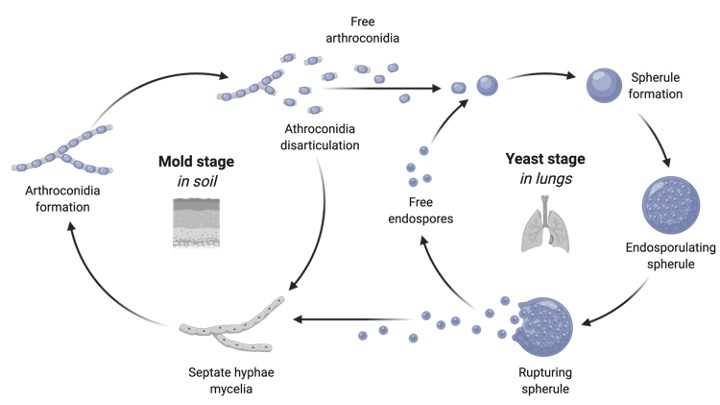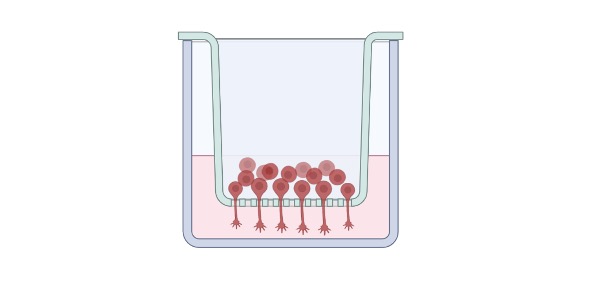Table of Contents
Coccidia Definition
Coccidia are parasites that inhabit the GI tracts of certain animals. Parasitic infection by them is called coccidiosis. They belong to a subclass within class Conoidasida, of the phylum Apicomplexa. Examples of these parasites include Cryptosporidium, Isospora, and Cyclospora species.
What is Coccidia?
Coccidian comprises unicellular microscopic parasites and belongs to apicomplexan protozoa. These are intracellular parasites and form. They have the following life forms: oocyst, sporozoite, trophozoite, merozoite (schizont), and gametocyte.
The first stage oocyst has a thick shell with a single nucleus and a large amount of protoplasm. This is a non-infective stage and is unsporulated. Sporozoites are formed in the protoplasm as it divides.
Once sporulated they become infective and are found in the environment. The schizont characterizes the asexual stage that is elongated and nucleated found in the intestine of the host. The sexual stage is comprised of the gametocytes that are found in the intestine of the host.
Coccidia Life Cycle
The oocyst is passed in the feces of the host and at that stage they undergo sporulation. On ingesting sporulated infective oocyst, coccidians emerge and mature and ultimately are released in feces to begin a new cycle.

They are obligate parasites and there occurs no free-living phase in their life cycle. The definitive host of this intracellular parasite can be a reptile, bird, amphibian, or mammal. Their lifecycle includes the stages: sporogony, merogony, and gametogony.
Out of these 3 phases, only the last stage is sexual. In the sporogony stage, unsporulated oocytes are released in the feces of the host which then become sporulated under favorable conditions like good oxygenation, humidity, and a temperature of around 27°C.
At this phase, the nucleus can undergo a series of divisions with the formation of a conical body leading to the formation of sporoblast. Each sporoblast has its wall and divides the protoplasm. This stage where the sporulated oocyte comprises infective sporozoites is the infective stage of the parasite.
The next stage is schizogony where the sporulated oocyst releases the sporozoites inside of the host. They are activated due to the effect of bile or trypsin following which they travel and invade intestinal epithelial cells to mature into trophozoites.
The trophozoite then divides to generate merozoites. Inside the trophozoite, the collective term for all the merozoites is meront. Upon maturity, the trophozoite (as well as the host cell) ruptures to release the merozoites that can infect another epithelial cell.
The merozoites may reproduce asexually as described above or to progress to the next stage, gametogony. In gametogony process, the merozoite differentiates into a gametocyte. Female gametocyte is usually larger than the male one as it has a big prominent nucleus and is referred to as macrogametocyte. In the case of male gametocytes, it is called microgametocyte.
The microgametocyte is motile and possesses flagella. The host cell ruptures to release microgametes and swims towards macrogametocyte to fertilize it to produce an oocyst that is released into the environment by excretion. The paratenic transport hosts are used for transport for rats, hamsters, mice, and other vertebrates.
Coccidia in non-Human Hosts
These intracellular parasites have many hosts like reptiles, mammals, amphibians, and birds. They reside in intestinal cells and cause coccidiosis. Coccidia can occur in dogs when ingested from infected water and food.
It is a common condition in puppies but can turn fatal in them. Diarrhea mostly mucous water like is a general symptom of coccidiosis. If bloody diarrhea occurs then it is a more serious condition. Kittens also experience this disease generally.
Infected hosts may have symptoms of coccidiosis like vomiting or diarrhea or may be asymptomatic as in older rabbits, while in younger ones they may show stunted growth due to the negative effect on the liver and kidneys. This condition can also be mistaken as an infection caused by worms.
Species that infect dogs include Isospora canis, I. neorivolta, I. burrowsi, and I. ohioensis. While in the case of rabbits the most common species include Eimeria sp.
Coccidia in Humans
Humans are also a definite host for this intestinal parasite and are thus vulnerable to coccidian infection leading to Human coccidiosis. One of the common parasites is Cystoisospora belli, others include Cryptosporidium species and Cyclospora. Symptoms include fever, diarrhea, abdominal pain, nausea, loss of appetite, and weight loss.
These symptoms can be seen after approximately one week of sporocyte ingestion from a contaminated environment. Common symptoms are diarrhea (which could alternate with constipation), fever, headache, and weight loss. The symptoms usually appear one week after sporocyte ingestion. The symptoms last for 1 to 4 weeks.
Coccidia Treatment
Coccidiostats are used to combat coccidiosis like Amprolium, Roxarsone, Lasalocid, Decoquinate, Spiramycin, and Salinomycin. Whereas in cats and dogs, a sulfa-based antibiotic is used that interferes with the reproduction of coccidia.
Coccidia Prevention
Preventive measures include being hygenic and consuming clean water and food only. Hands should be washed before every meal and refrain from drinking water from the pool.
Coccidia Citations
- The Evolutionary Biology, Ecology and Epidemiology of Coccidia of Passerine Birds. Adv Parasitol . 2018;99:35-60.
- The Coccidia (Apicomplexa) of the Archosauria (Crocodylia: Eusuchia) of the World. J Parasitol . 2020 Feb;106(1):90-122.
- Infections by Intestinal Coccidia and Giardia duodenalis. Clin Lab Med . 2015 Jun;35(2):423-44.
- Figures are created with BioRender.com







